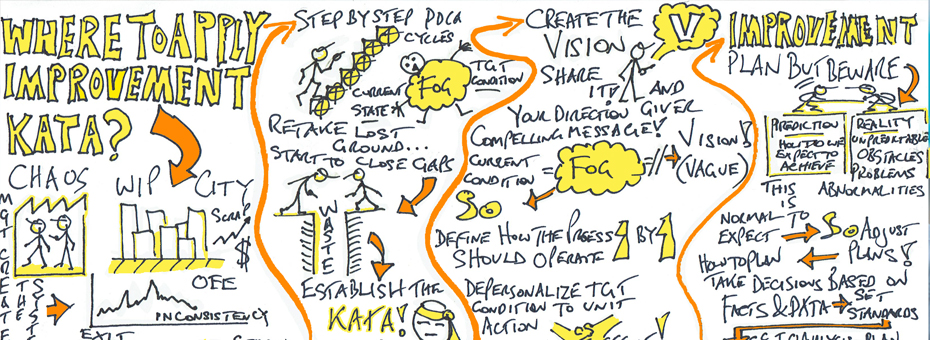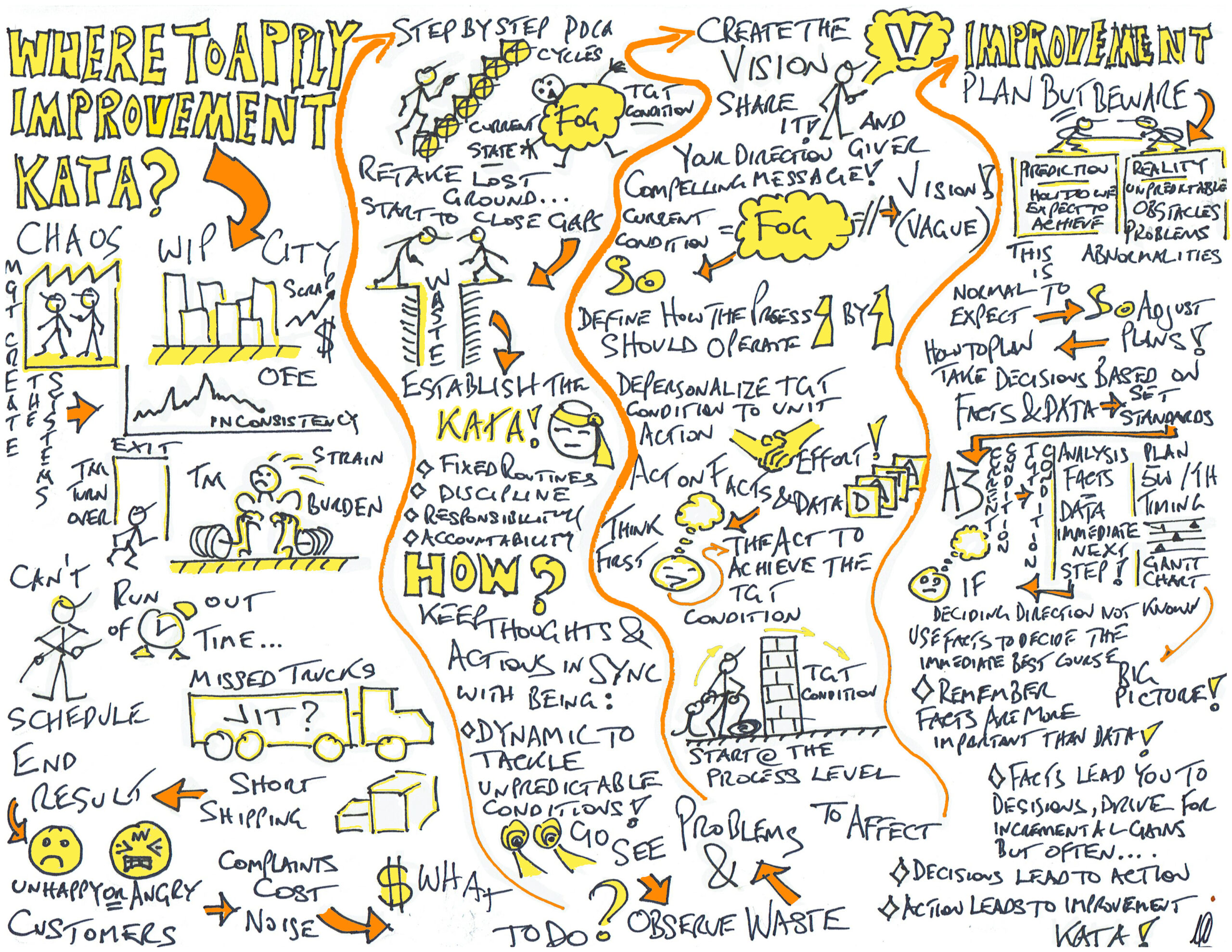Take a look at my sketch (and its animation, if you’d like). Does the story look familiar? This is a familiar picture in any manufacturing business that is battling high costs, high levels of waste and poor management decisions. The result? The business is driven into CHAOS and this tends to be a cyclic situation as management teams turn over across years.
So how do we get out of the hole?
We establish a STEP-BY-STEP process to retake lost ground. What do I mean?
When you set up a new production line or launch a new process the goal is normally to get it as good as you can. You try to engineer in all the right stuff to get your process 100 percent right the first time, achieving high productivity and quality out the door just in time. But then what happens six to 12 months later? Or two years down the line into production?
CHANGES HAPPEN. They may be discrete, small or subtle. People will change conditions, parameters, sequence, flow, etc. We lose the ground we had by allowing waste to take over. So NOW we must work to take back that lost ground and get back to the normal baseline conditions we originally had.
We apply a KATA “correct-it” mentality, gemba walks, close observation and other means to identify the root cause of how and why these problems have been allowed to happen and create the vision to share across the organization of what we will do to make it right again. Then we set the target conditions and, starting with at the process level, we tackle our problems one-by-one.
Of course, lean is situational, and there could be infinitely many approaches that suit your organization – this just happens to be my personal spin and view. But regardless of variations, what your approach should boil down to is an easy-to-follow and -understand, step-by-step process to make incremental improvements and emerge victorious in the never-ending battle against “chaos and waste.”






